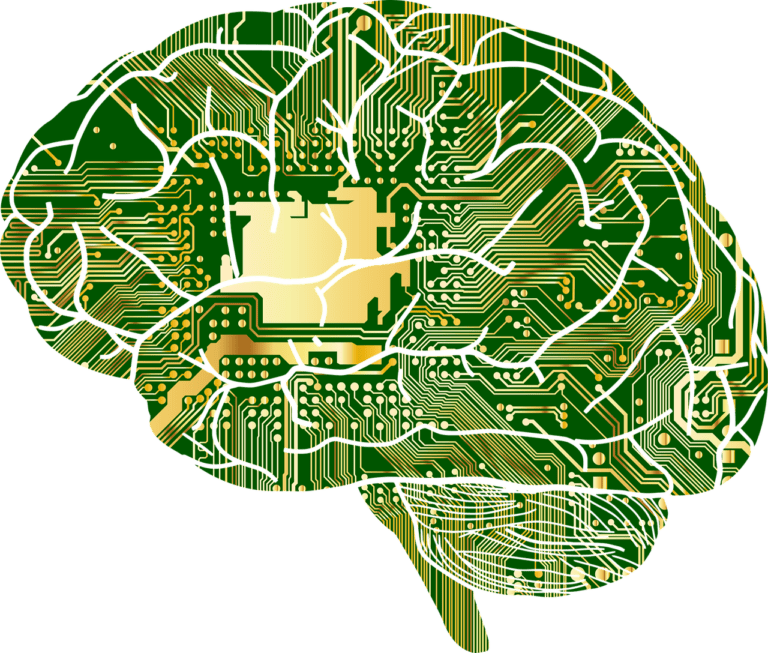Overcoming Language Barriers in Training
Overcoming language barriers in training is a critical endeavor in today’s diverse workplace. Effective communication is essential for successful learning and development, and language differences can pose significant challenges.
This necessitates a strategic approach to ensure that all employees, regardless of their language proficiency, have equal access to training materials and opportunities for active participation. By implementing inclusive strategies and leveraging appropriate resources, organizations can create an environment that fosters learning and growth across language boundaries.
This introduction will explore key methods for overcoming language barriers in training, providing practical insights for trainers and educators seeking to enhance the accessibility and effectiveness of their programs.
Key Takeaways
- Language proficiency levels are important to assess in order to tailor training programs and implement effective teaching strategies for diverse learners.
- Visual aids play a crucial role in overcoming language barriers by providing clarity, universal understanding, and engagement.
- Clear graphics and images, visual consistency, and visual storytelling techniques aid comprehension and transcend language barriers.
- Encouraging interactive participation through activities, games, and interactive technologies fosters practical language application and engagement in training.
Understanding Language Proficiency Levels
Understanding language proficiency levels is crucial for effectively addressing language barriers in training. Language assessment plays a pivotal role in determining an individual’s proficiency level in a particular language. Proficiency levels are commonly categorized as beginner, intermediate, advanced, and native or fluent.
Assessing language proficiency involves evaluating an individual’s speaking, listening, reading, and writing skills. This evaluation helps in understanding the extent of an individual’s language abilities and identifying areas that require improvement.
Language assessment tools such as standardized tests, interviews, and proficiency scales are utilized to gauge an individual’s language proficiency level accurately. These tools provide valuable insights into an individual’s ability to comprehend and communicate in a given language.
Understanding language proficiency levels enables trainers to tailor their training programs to meet the specific needs of learners at different proficiency levels. It also aids in developing targeted learning materials and exercises that align with the language abilities of the trainees.
Moreover, by recognizing language proficiency levels, trainers can implement effective teaching strategies that accommodate diverse learning needs, ultimately fostering an inclusive and successful training environment.
Leveraging Visual Aids for Clarity
In the realm of training, leveraging visual aids plays a pivotal role in enhancing understanding and transcending language barriers.
Clear graphics and images have the unique ability to communicate complex concepts in a universally comprehensible manner, making them an invaluable tool for ensuring clarity and comprehension across diverse language proficiencies.
Visual Aids Enhance Understanding
Utilizing visual aids is essential for enhancing comprehension and clarity in training sessions where language barriers are present. Visual aids play a crucial role in enhancing engagement and facilitating learning for individuals with diverse linguistic backgrounds.
Here are four key reasons why leveraging visual aids is beneficial in overcoming language barriers:
-
Clarity: Visual aids provide a clear and concise representation of information, making it easier for trainees to understand complex concepts, regardless of their language proficiency.
-
Universal Understanding: Visual aids transcend language barriers, enabling all participants to grasp the training content effectively.
-
Retention: Visual aids aid in better information retention as they reinforce verbal instructions, ensuring that trainees can recall and apply the training material.
-
Engagement: Visual aids capture attention and maintain interest, keeping trainees engaged throughout the training session.
Images Transcend Language Barriers
Leveraging visual aids for clarity is essential in transcending language barriers during training sessions. Visual communication plays a pivotal role in ensuring that information is effectively conveyed, regardless of the linguistic diversity amongst participants.
Utilizing images, charts, and graphs can help to clarify complex concepts and make them more accessible to all trainees, irrespective of their native language. When incorporating visual aids, it’s important to consider cultural sensitivity to ensure that the images used are respectful and inclusive of all participants.
This requires an understanding of cultural nuances and norms to avoid inadvertently causing offense. By leveraging visual aids thoughtfully and with cultural sensitivity in mind, trainers can create an inclusive and effective learning environment that transcends language barriers, enabling all participants to fully engage with the training material.
Clear Graphics Aid Comprehension
Clear graphics are essential for aiding comprehension and transcending language barriers during training sessions. When leveraging visual aids for clarity, consider the following:
-
Simplicity: Use simple, easy-to-understand graphics to convey complex ideas without relying on language.
-
Consistency: Maintain a consistent visual style to ensure coherence and avoid confusion among trainees from diverse language backgrounds.
-
Visual storytelling: Incorporate visual storytelling techniques to convey messages and concepts without relying solely on written or spoken language.
-
Language immersion: Integrate visual aids that incorporate the local language or symbols familiar to the trainees, promoting a sense of familiarity and understanding.
Encouraging Interactive Participation
To foster interactive participation, trainers should create opportunities for active engagement and communication among participants. One effective way to encourage interactive engagement is through the use of language games. These games not only make learning more enjoyable but also provide a platform for participants to practice and apply their language skills in a fun and interactive manner.
Trainers can incorporate games such as word association, vocabulary relay races, or language trivia quizzes to stimulate participation and collaboration among trainees. By participating in these activities, individuals can gain confidence in using the new language, thereby breaking down communication barriers and fostering a more inclusive training environment.
Furthermore, trainers should facilitate group discussions and pair activities that require participants to communicate with each other in the target language. This not only provides an opportunity for practical language application but also encourages interaction and collaboration. Additionally, using interactive technologies such as polling software or interactive whiteboards can enhance engagement and encourage active participation.
Ultimately, creating a dynamic and interactive training environment can significantly contribute to overcoming language barriers and promoting effective communication among participants.
Embracing Multilingual Resources
To facilitate effective communication and learning in a multilingual training environment, it is crucial to embrace and utilize multilingual resources.
This includes employing translation tools to ensure that training materials are accessible to all participants, as well as integrating interactive language learning activities to encourage active engagement and skill development.
Embracing multilingual resources not only promotes inclusivity but also enhances the overall effectiveness of the training program.
Utilizing Translation Tools
Utilizing translation tools is essential for embracing multilingual resources in training programs. When considering the incorporation of translation software, it is imperative to assess the language proficiency of both trainers and trainees.
To effectively utilize these tools, interactive learning should be encouraged to enhance understanding. Additionally, technology solutions such as real-time translation apps and multilingual e-learning platforms can significantly aid in overcoming language barriers.
It is crucial to choose translation tools that are user-friendly and compatible with various devices, ensuring seamless integration into training programs. Regular updates and training on these tools should be provided to ensure their effective use and to stay abreast of advancements in translation technology.
Interactive Language Learning
Embracing multilingual resources in interactive language learning is essential for overcoming language barriers in training programs.
Interactive practice allows learners to actively engage with the language, promoting better retention and comprehension.
Language immersion, where learners are consistently exposed to the language in various contexts, further reinforces their understanding and fluency.
Incorporating multilingual resources such as videos, online exercises, and language exchange platforms provides diverse perspectives and authentic language usage.
This approach not only fosters a deeper understanding of the language but also encourages cultural appreciation.
Implementing Technology-Based Solutions
The implementation of technology-based solutions has become increasingly crucial in overcoming language barriers in training. Technology integration has significantly enhanced language learning by providing innovative tools and resources.
Here are four key ways in which technology-based solutions can effectively address language barriers in training:
-
Online Language Learning Platforms: These platforms offer interactive lessons, language exercises, and real-time feedback, enabling trainees to learn at their own pace and practice language skills in a supportive environment.
-
Virtual Reality Language Simulations: Virtual reality technology allows trainees to immerse themselves in simulated language environments, such as a virtual marketplace or workplace, where they can practice communication skills and cultural understanding.
-
Language Translation Tools: Advanced translation software and apps facilitate real-time language translation, enabling seamless communication between trainers and trainees who speak different languages.
-
Multilingual E-learning Resources: Developing training materials in multiple languages ensures that all trainees have access to essential learning resources, regardless of their language proficiency.
Building Language-Friendly Training Materials
An essential component in addressing language barriers in training involves creating language-friendly training materials that cater to diverse linguistic needs. To achieve this, it is crucial to start with a thorough language assessment of the target audience. This assessment helps in understanding the languages spoken, proficiency levels, and any specific dialectical variations. By conducting a comprehensive language assessment, training developers can tailor materials to meet the linguistic requirements of the audience effectively.
Moreover, building language-friendly training materials necessitates a high level of cultural sensitivity. It is essential to consider the cultural nuances and preferences of the target audience when designing training materials. This includes using culturally relevant examples, images, and scenarios that resonate with the learners, ultimately enhancing their understanding and engagement with the content.
Furthermore, the use of clear and simple language, avoiding idiomatic expressions, and providing visual aids can significantly contribute to creating language-friendly training materials. These strategies can help bridge the language gap and ensure that all learners, regardless of their language background, can access and comprehend the training content effectively.
Cultivating a Supportive Learning Environment
Creating a supportive learning environment requires fostering open communication and understanding among diverse language backgrounds.
To cultivate a supportive culture and an inclusive environment, the following strategies can be implemented:
-
Encourage Active Participation:
- Encourage all participants to actively engage in discussions and activities.
- Create small group activities where individuals can collaborate and learn from each other, regardless of their language proficiency.
-
Provide Language Support:
- Offer language support resources such as bilingual glossaries, translated materials, or language assistance from fluent speakers.
- Ensure that all participants have access to the necessary information in a language they understand.
-
Promote Empathy and Respect:
- Foster an environment where individuals respect and appreciate each other’s language abilities.
- Encourage empathy and patience when communicating with someone who may be struggling with language barriers.
-
Offer Cultural Awareness Training:
- Provide training on cultural differences and communication styles.
- Help participants understand and appreciate the diversity within the learning environment, fostering a more inclusive and supportive atmosphere.
Conclusion
In conclusion, overcoming language barriers in training requires:
- A thorough understanding of language proficiency levels: It is important to assess the language proficiency levels of participants in order to tailor the training content and materials accordingly.
- The use of visual aids: Visual aids such as images, charts, and diagrams can help convey information more effectively, regardless of language proficiency.
- Interactive participation: Encouraging active participation through group activities, discussions, and role plays can help participants practice and improve their language skills.
- Multilingual resources: Providing training materials, instructions, and resources in multiple languages can ensure that all participants can access and understand the content.
- Technology-based solutions: Utilizing technology such as translation tools, subtitles, and language learning apps can help overcome language barriers and facilitate comprehension.
- Language-friendly training materials: Developing training materials that are clear, concise, and easy to understand can make the learning process smoother for participants with different language backgrounds.
Cultivating a supportive learning environment is also crucial for successful language training. This can be done by:
- Encouraging open communication and creating a safe space for participants to ask questions and seek clarification.
- Fostering a collaborative and inclusive atmosphere where participants can learn from each other’s experiences and perspectives.
- Providing additional support, such as language tutors or language exchange programs, for participants who need extra assistance.
- Recognizing and celebrating the diversity of language backgrounds in the training, and promoting a culture of respect and appreciation for different languages and cultures.
By implementing these strategies and creating a language-inclusive learning environment, we can ensure that language barriers do not hinder the learning process for all participants.






